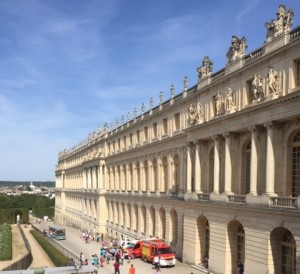Just thinking of the Palace of Versailles creates visions of opulence and grandeur in our minds. Gold and bronze leaf doors, grand marble statues of Louis XIV and the majestic Hall of Mirrors.
While I’m a fan of gold decorations and ornate paintings, my blog will focus on the various stones at the Palace of Versailles. You won’t just find marble mosaics inlaid on the floors, you can also find various marbles of all colors on the walls as well. Of course the Sun King had to surround himself with the world’s finest marbles.
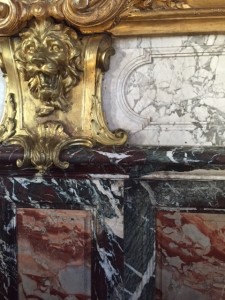
Salon De Vénus
This room is the entrance of the Grand Apartments of Louis XIV. He entertained here and held receptions with delicious buffets- think silver basins full of fruits and candies. Of course the guests of these lavish receptions could admire this amazing statue of Louis XIV by sculptor Jean Varin, located in a central niche on the South side wall.
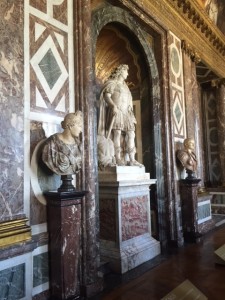
Interestingly, The floor of the salon was originally paved with red and green marble; however, was replaced with parquet floors.
Salon De La Guerre
The “War Room” is located on the North side (while the Peace Room is located on the South side) of the Palace. This room contains precious marble panels, trophies, bronze carvings and mirrors. The room also contains an oval plasterwork bas-relief fresco of a victorious Louis XIV on horseback as he defeats his foes.
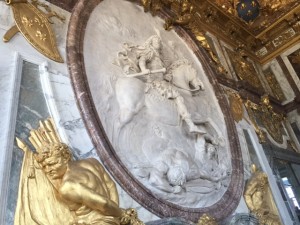
Hall of Mirrors
Of course, we are all looking at the mirrors, but take a moment to look beyond our reflections and note the polished marble walls. Can you imagine how marble was polished at the time the Hall was constructed? This polish was all done by hand – no advanced polishing machines.
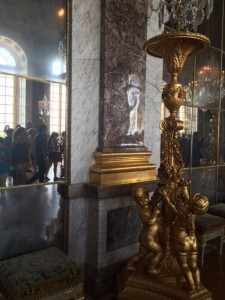
Cour de Marbre
The Marble Court was originally the entrance court of the old château, at the foot of the King’s Chamber, built in 1623 by Louis XIII. The courtyard is paved with white and black marble in a geometric pattern. The stones came from Château de Vaux-le-Vicomte (tiles that King already possessed).
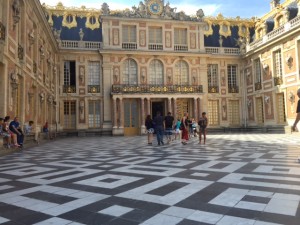
Le Trianon De Porcelaine
The Porcelain Trianon was erected in 1670, so Louis XIV could escape the formality of court life along with his mistress, Madame de Montespan.
By 1687, the tiles had deteriorated and Louis XIV ordered the demolition of the pavilion and in its place, he requested a much stronger material: marble (specifically red marble of Languedoc for the columns).

Architect Jules Harouin Mansart created a new structure twice the size of the original pavilion and was known as the Trianon De Marbre or le Grand Trianon.
It would be easy to go on and on about the various gorgeous stone structures and statues not only in the palace, but also in the gardens. I hope that you will have the opportunity to visit this amazing place, to walk through a remarkable part of history as well as to observe this luxurious feast for the eyes.


